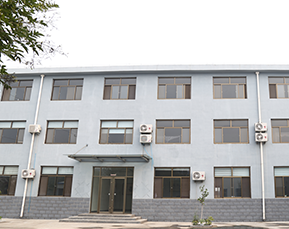 Afrikaans
Afrikaans  Albanian
Albanian  Amharic
Amharic  Arabic
Arabic  Armenian
Armenian  Azerbaijani
Azerbaijani  Basque
Basque  Belarusian
Belarusian  Bengali
Bengali  Bosnian
Bosnian  Bulgarian
Bulgarian  Catalan
Catalan  Cebuano
Cebuano  Corsican
Corsican  Croatian
Croatian  Czech
Czech  Danish
Danish  Dutch
Dutch  English
English  Esperanto
Esperanto  Estonian
Estonian  Finnish
Finnish  French
French  Frisian
Frisian  Galician
Galician  Georgian
Georgian  German
German  Greek
Greek  Gujarati
Gujarati  Haitian Creole
Haitian Creole  hausa
hausa  hawaiian
hawaiian  Hebrew
Hebrew  Hindi
Hindi  Miao
Miao  Hungarian
Hungarian  Icelandic
Icelandic  igbo
igbo  Indonesian
Indonesian  irish
irish  Italian
Italian  Japanese
Japanese  Javanese
Javanese  Kannada
Kannada  kazakh
kazakh  Khmer
Khmer  Rwandese
Rwandese  Korean
Korean  Kurdish
Kurdish  Kyrgyz
Kyrgyz  Lao
Lao  Latin
Latin  Latvian
Latvian  Lithuanian
Lithuanian  Luxembourgish
Luxembourgish  Macedonian
Macedonian  Malgashi
Malgashi  Malay
Malay  Malayalam
Malayalam  Maltese
Maltese  Maori
Maori  Marathi
Marathi  Mongolian
Mongolian  Myanmar
Myanmar  Nepali
Nepali  Norwegian
Norwegian  Norwegian
Norwegian  Occitan
Occitan  Pashto
Pashto  Persian
Persian  Polish
Polish  Portuguese
Portuguese  Punjabi
Punjabi  Romanian
Romanian  Russian
Russian  Samoan
Samoan  Scottish Gaelic
Scottish Gaelic  Serbian
Serbian  Sesotho
Sesotho  Shona
Shona  Sindhi
Sindhi  Sinhala
Sinhala  Slovak
Slovak  Slovenian
Slovenian  Somali
Somali  Spanish
Spanish  Sundanese
Sundanese  Swahili
Swahili  Swedish
Swedish  Tagalog
Tagalog  Tajik
Tajik  Tamil
Tamil  Tatar
Tatar  Telugu
Telugu  Thai
Thai  Turkish
Turkish  Turkmen
Turkmen  Ukrainian
Ukrainian  Urdu
Urdu  Uighur
Uighur  Uzbek
Uzbek  Vietnamese
Vietnamese  Welsh
Welsh  Bantu
Bantu  Yiddish
Yiddish  Yoruba
Yoruba  Zulu
Zulu mining conveyor pulleys
Understanding Mining Conveyor Pulleys Essential Components for Efficient Operations
In the mining industry, efficiency and reliability are paramount. One of the critical components that contribute to these qualities is the conveyor pulley. Mining conveyor pulleys play a vital role in material handling, ensuring seamless movement of bulk materials, from rock and ore to coal and minerals. Understanding their design, function, and maintenance is crucial for optimizing performance and minimizing downtime in mining operations.
Types of Conveyor Pulleys
Conveyor pulleys come in various types, each designed for specific applications within the mining process. The most common types include
1. Drive Pulleys These are positioned at the head of the conveyor system. Drive pulleys are essential for providing the tension necessary to move the belt and are driven by motors, which generate the force needed to transport materials.
2. Idler Pulleys Placed along the length of the conveyor, idler pulleys support the belt and help maintain its stability. They play a crucial role in ensuring the belt remains aligned, reducing wear and tear over time.
3. Tail Pulleys Located at the end of the conveyor system, tail pulleys help to control the movement of the conveyor belt. They also assist in maintaining tension throughout the system, ensuring optimal performance from the drive pulley to the tail end.
4. Snub Pulleys These pulleys are used to redirect the belt at certain angles, helping to maintain tension and overcome resistance from idlers. They play a critical role in keeping the conveyor belt fully engaged with the drive pulley.
Materials and Construction
The construction of mining conveyor pulleys is crucial for their durability and performance
. Typically, pulleys are constructed using high-quality materials, such as steel and rubber, to withstand the harsh environments of mining operations. The use of corrosion-resistant coatings and heavy-duty bearings also enhances the lifespan of these components.mining conveyor pulleys

Moreover, the design of conveyor pulleys must accommodate the specific demands of mining applications, such as variations in load, speed, and belt width. Enhancements like lagging on the surface of drive pulleys improve friction and grip, reducing slippage and enhancing overall operational efficiency.
Maintenance Considerations
Regular maintenance of conveyor pulleys is essential to ensure their longevity and optimal performance. Key maintenance practices include
- Regular Inspections Routinely check for wear, misalignment, and other issues. Identifying problems early can prevent significant failures.
- Lubrication Keeping bearings well-lubricated reduces friction and wear, extending the life of the pulleys.
- Alignment Regularly check and adjust the alignment of pulleys to prevent issues with the conveyor belt that can lead to damage or inefficiency.
- Lagging Replacement Timely replacement of worn lagging on drive pulleys is crucial for maintaining effective grip and preventing slippage.
Conclusion
In conclusion, mining conveyor pulleys are vital components that support the efficient transport of materials within the mining industry. Their various types and robust construction ensure reliable performance in challenging environments. By investing in quality materials, regular maintenance, and timely inspections, mining operations can enhance the efficiency of their conveyor systems, ultimately leading to increased productivity and reduced operational costs. Understanding the role and significance of conveyor pulleys can make a significant difference in the success of mining operations.
-
Trusted Conveyor Solutions from Leading Conveyor Idler Roller ManufacturersNewsJun.27,2025
-
Reliable Return Idler Solutions for Efficient Belt Conveyor SystemsNewsJun.27,2025
-
Precision Conveyor Accessories for Streamlined Material HandlingNewsJun.27,2025
-
High-Quality Belt Conveyor Idler Solutions for Efficient Material HandlingNewsJun.27,2025
-
High-Performance Belt Conveyor Pulleys for Reliable Material HandlingNewsJun.27,2025
-
Enhancing Material Handling EfficiencyNewsJun.27,2025





























